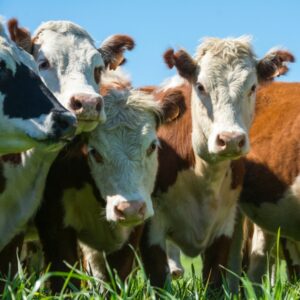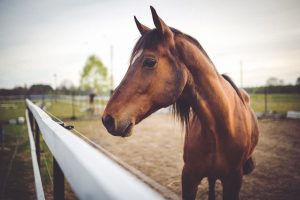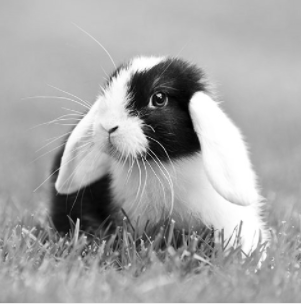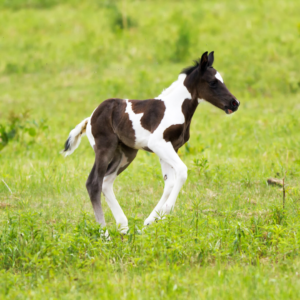Those who buy over-the-counter livestock antibiotics at the local feed store will be required, as of June 11, to obtain a prescription before purchase.
 What is the new rule?
What is the new rule?
The Food and Drug Administration recommends manufacturers of medically important antimicrobial drugs that continue to be available over the counter and are approved for use in animals, both companion and food-producing, regardless of delivery mechanism, to voluntarily bring these products under veterinary oversight or prescription marketing status.
By June 11, labels of the remaining over-the-counter antibiotics for livestock use will be required to read: “Caution: Federal law restricts this drug to use by or on the order of a licensed veterinarian,” and the purchaser must have a prescription or drug order to buy it.
What antibiotics does this affect?
Prescription-only items will include injectable tylosin, injectable and intramammary penicillin, injectable and oral oxytetracycline, sulfadimethoxine and sulfamethazine, gentamicin, cephapirin and cephapirin benzathine intramammary tubes.
How and where can these items be purchased after the rule goes into effect?
Individuals with veterinary-client-patient relationships, VCPR, may purchase antibiotics directly from their veterinarian or from a distributor with the vet’s prescription.
What constitutes a VCPR?
Three requirements must be met:
(1) The veterinarian has assumed the responsibility for making clinical judgments regarding the health of the animal and the need for medical treatment, and the client has agreed to follow the veterinarian’s instructions.
(2) The veterinarian has sufficient knowledge of the animal to initiate at least a general or preliminary diagnosis of the animal’s medical condition. This means that the veterinarian has recently seen and is personally acquainted with the keeping and care of the animal by examining the animal or by medically appropriate and timely visits to the premises where the animal is kept.
(3) The veterinarian is readily available or has arranged emergency coverage and follow-up evaluation in the event of adverse reactions or the failure of the treatment regimen.
What’s your advice to livestock owners without a VCPR?
Producers who already have a VCPR in place and purchase their animal health products through their veterinary office or through other distributors under an existing prescription system will likely notice little change. However, this may have significant impacts on how the livestock owners can access antibiotic therapy for their animals, so contact your local veterinarian as soon as possible.
Are there any specific instructions that should be given to livestock show exhibitors?
Livestock exhibitors, like all producers in animal agriculture, are responsible for understanding animal treatment regulations. For junior shows, students complete the “Quality Counts” quality-assurance curriculum that stresses the importance of VCPR.
What health/medical items can livestock owners continue to purchase over the counter?
Most vaccines, dewormers, injectable and oral nutritional supplements, ionophores, pro/prebiotics and topical nonantibiotic treatments will not require a veterinary prescription. However, there are some exceptions. Always read the label.
Below is a list of products that are impacted by the new law effective June 11, 2023.
Common Agricultural Antibiotics Requiring a Prescription
Products without new Rx label may be purchased AFTER June 11 without a prescription while supplies last.
Cepharin Based Active Ingredient
- ToDay Mastitis Treatment for Lactating Cows by Boehringer Ingelheim
- ToMORROW Dry Cow Mastitis Treatment by Boehringer Ingelheim
Lincomvcin HCl Active Ingredient
- Lincomycin 300 Swine Injection by Durvet
Oxvtetracvcline Active Ingredient
- Duramycin 72-200 Injectable Antibiotic for Cattle and Swine by Durvet
- Liquamycin LA-200 Injection by Zoetis
- Noromycin 300 LA by Norbrook
- Oxy 500 Calf Boluses by Boehringer Ingelheim
- Terramycin Calf Scours Tablets by Zoetis
- Terramycin Ophthalmic Ointment for Animal Use by Zoetis
Penicillin Based Active Ingredient
- Penicillin G/Norocillin Injectable by Durvet
Spectinomycin Active Ingredient
- SpectoGard Scour-Chek by Bimeda
Sulfonamides L Sulfa Based Active Ingredients
- Albon Cattle Boluses by Zoetis
- Sustain III Boluses by Bimeda
Ivlosin Active Ingredient
- Tylan 200 Tylosin Antibiotic for Cattle and Swine by Elanco
- Tylan 50 Injectable Antibiotic by Elan
Please work with your local veterinarian to obtain a prescription for these products prior to visiting us for these products. Thank you, we appreciate your support.
Source: Texas A&M Extension AgriLife Today
 Let’s face it, the summer heat takes its toll…know the basics of electrolytes for horses to protect them! Based on the article, horses use their sweat to regulate their body temperature. Equine sweat is more concentrated with salt (sodium and chloride) than other body fluids. In result, horses lose a tremendous amount of electrolytes during these harsh, hot summer months. So what exactly are electrolytes? They help the body regulate water levels to maintain a balance between dilution and dehydration. There are five major electrolytes. These include sodium, chloride, potassium, calcium, and magnesium. Understanding how each one affects your horse is vital.
Let’s face it, the summer heat takes its toll…know the basics of electrolytes for horses to protect them! Based on the article, horses use their sweat to regulate their body temperature. Equine sweat is more concentrated with salt (sodium and chloride) than other body fluids. In result, horses lose a tremendous amount of electrolytes during these harsh, hot summer months. So what exactly are electrolytes? They help the body regulate water levels to maintain a balance between dilution and dehydration. There are five major electrolytes. These include sodium, chloride, potassium, calcium, and magnesium. Understanding how each one affects your horse is vital.




 Prepare Your Rabbits for Changing Seasons: Temperature can have a profound effect on feed intake in rabbits.
Prepare Your Rabbits for Changing Seasons: Temperature can have a profound effect on feed intake in rabbits. What is the new rule?
What is the new rule? Puppy Adoption Guide: Puppy adoption can be the best time of your life and certainly the best time (so far!) of your puppy’s life. But the process isn’t without stress. Questions and uncertainty abound, especially if this is your first time adopting a puppy. What kind of puppy food should you get? Is puppy food actually that different from adult dog food? When should puppy potty training happen, and how do you handle the inevitable messes? What about leash training and socialization? You’ll likely have dozens of questions about puppy adoption, which is why we’ve assembled a number of tips for puppy adoption to help you and your new pal get off on the right…paw.
Puppy Adoption Guide: Puppy adoption can be the best time of your life and certainly the best time (so far!) of your puppy’s life. But the process isn’t without stress. Questions and uncertainty abound, especially if this is your first time adopting a puppy. What kind of puppy food should you get? Is puppy food actually that different from adult dog food? When should puppy potty training happen, and how do you handle the inevitable messes? What about leash training and socialization? You’ll likely have dozens of questions about puppy adoption, which is why we’ve assembled a number of tips for puppy adoption to help you and your new pal get off on the right…paw. Signs of a Healthy Foal: Chances are your foal will sail through the baby stage with flying colors, especially if it’s normal at birth and good management practices are in place at your farm. However, even under the best circumstances, it’s possible that your youngster could fall prey to one or more problems that can affect foals. How does a healthy newborn foal appear?
Signs of a Healthy Foal: Chances are your foal will sail through the baby stage with flying colors, especially if it’s normal at birth and good management practices are in place at your farm. However, even under the best circumstances, it’s possible that your youngster could fall prey to one or more problems that can affect foals. How does a healthy newborn foal appear?